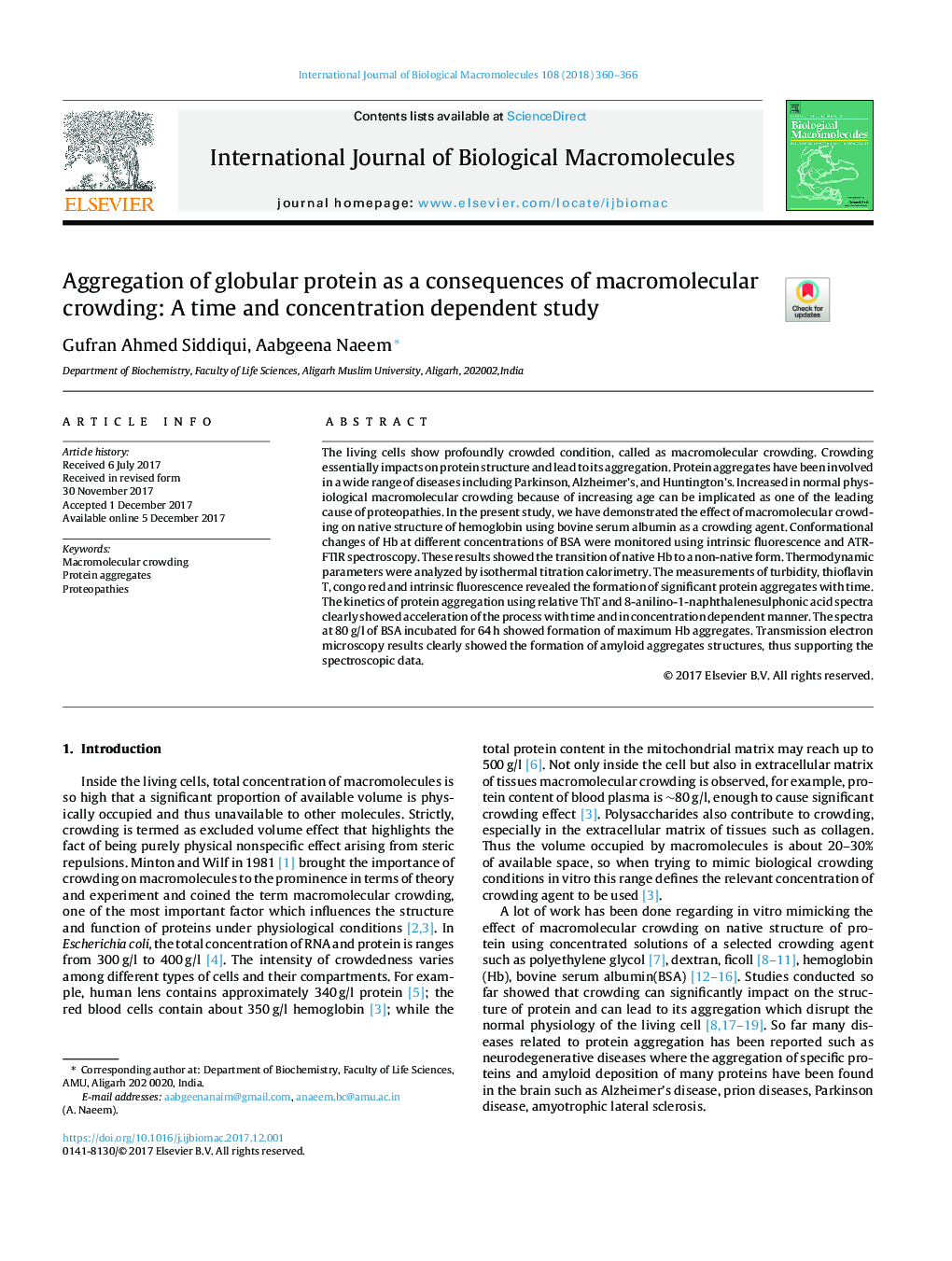| Article ID | Journal | Published Year | Pages | File Type |
|---|---|---|---|---|
| 8328411 | International Journal of Biological Macromolecules | 2018 | 7 Pages |
Abstract
The living cells show profoundly crowded condition, called as macromolecular crowding. Crowding essentially impacts on protein structure and lead to its aggregation. Protein aggregates have been involved in a wide range of diseases including Parkinson, Alzheimer's, and Huntington's. Increased in normal physiological macromolecular crowding because of increasing age can be implicated as one of the leading cause of proteopathies. In the present study, we have demonstrated the effect of macromolecular crowding on native structure of hemoglobin using bovine serum albumin as a crowding agent. Conformational changes of Hb at different concentrations of BSA were monitored using intrinsic fluorescence and ATR-FTIR spectroscopy. These results showed the transition of native Hb to a non-native form. Thermodynamic parameters were analyzed by isothermal titration calorimetry. The measurements of turbidity, thioflavin T, congo red and intrinsic fluorescence revealed the formation of significant protein aggregates with time. The kinetics of protein aggregation using relative ThT and 8-anilino-1-naphthalenesulphonic acid spectra clearly showed acceleration of the process with time and in concentration dependent manner. The spectra at 80Â g/l of BSA incubated for 64Â h showed formation of maximum Hb aggregates. Transmission electron microscopy results clearly showed the formation of amyloid aggregates structures, thus supporting the spectroscopic data.
Related Topics
Life Sciences
Biochemistry, Genetics and Molecular Biology
Biochemistry
Authors
Gufran Ahmed Siddiqui, Aabgeena Naeem,
